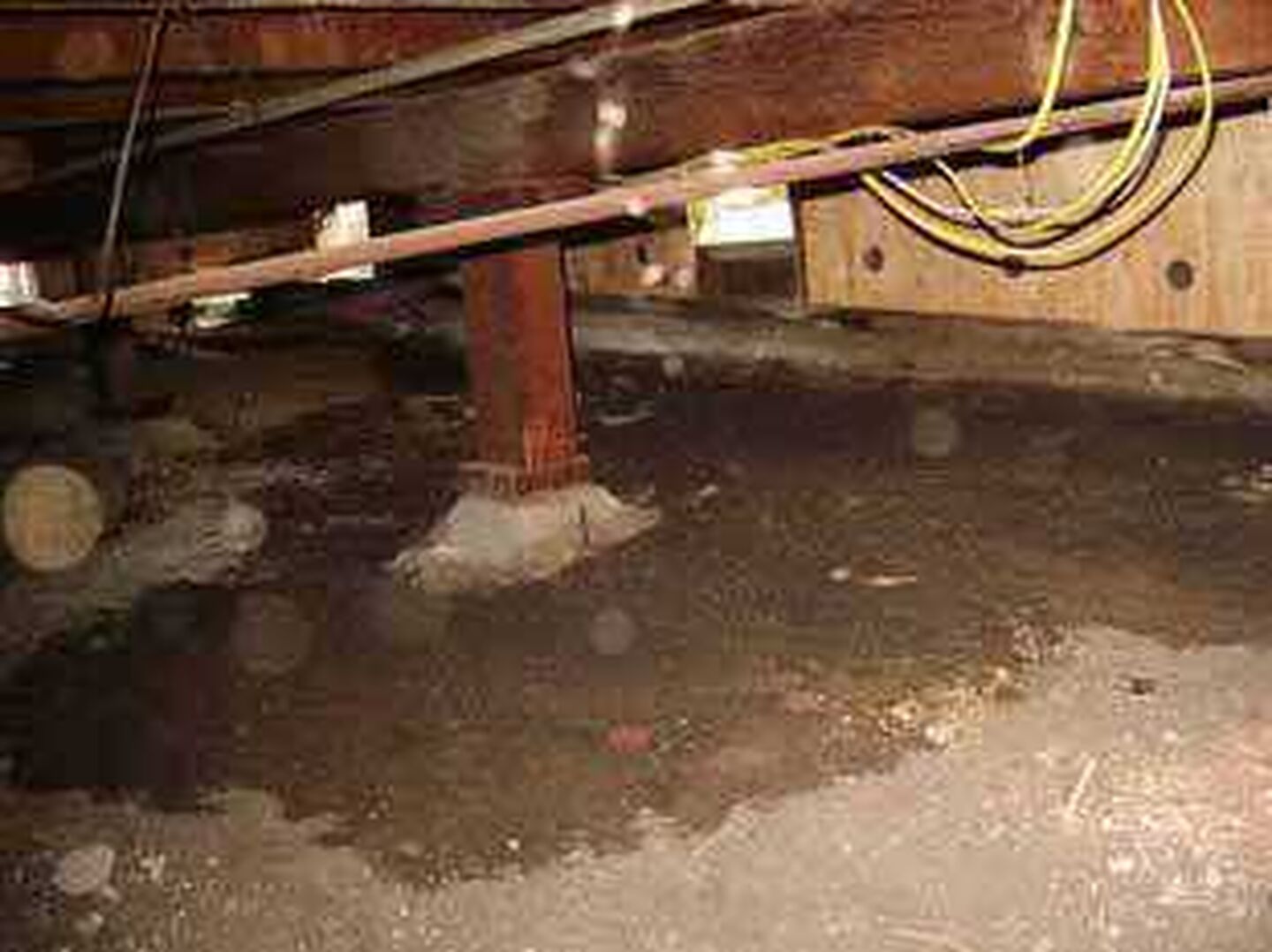Concrete Crawl Space Floors Stop Water, Offer Dry Storage Space

Lots of homes have crawl spaces. They may be partial ones that share the home’s footprint with a half-basement or they may be full, serving as the only belowground space in the home.
Regardless of their size, crawl spaces are like mini-basements that, although lacking the necessary headroom to be used as living space, can still be useful to the homeowner as room for storage. Their resemblance to basements continues in the fact that they are subject to all the problems that can befall basements, including water seepage, high humidity and mold growth.
One problem with many crawl spaces that allows a lot of these problems to occur is their lack of a solid floor. To save costs during construction, crawl spaces are often left with a dirt floor that is covered only with an often too-thin layer of plastic sheeting that is supposed to function as a vapor barrier.
There are a couple of ways to seal a crawl space to eliminate seepage, high humidity and mold (and insects and other pests) and one of the simplest is to install a concrete floor.
Installing a Concrete Crawl Space Floor
Any crawl space that offers at least three feet of room is a candidate for a concrete floor and it can be installed by a basement waterproofing contractor.
First, the contractor removes any old plastic and levels the dirt floor as much as possible. He then lays down a real vapor barrier, a 3 – 6 mil sheet of tough polyethylene. The hose from a concrete truck is brought into a window or other opening and concrete is pumped into the crawl space until a level of 2 – 3 inches is reached.
The contractor then levels the floor to a “rough float” surface – no need for a smooth finish and its extra cost in a crawl space.
Of course, if the crawl space has routinely experienced water problems, the wise homeowner will deal with them before the concrete floor is poured.
Just as crawl spaces can have the same problems as full basements, they can also be repaired in many of the same ways. For the crawl space that is always wet, an interior drain tile system is recommended. Interior drain tile is a system of perforated pipe that is buried even with the crawl space footings in a bed of washed gravel and connected to a sump pump. The pipe alleviates the hydrostatic pressure that had been pushing the water into the crawl space and carries ground water to the sump pump for disposal.
Once the drain tile system is in place, the concrete floor can be poured as related above.
Of course, there is an alternative to the concrete crawl space floor and it is known as crawl space encapsulation, a process that creates a sealed plastic “capsule” that covers the floor and walls of the crawl space and keeps out water, humidity and mold. The heavy 12 – 20 mil polyethylene vapor barrier that goes on the floor is not as rigid as poured concrete but it still creates a dry, stable environment for storage.
After the floor is covered, semi-rigid insulation is used to cover the walls and is sealed to the floor covering and at the top. The result is dry, bright and permanent.
No matter whether a homeowner chooses a concrete floor or encapsulation, the home’s value and usefulness will be increased with a dry, bright crawl space and much-needed storage space. At U.S. Waterproofing, we have been fixing crawl spaces around Chicagoland for more than 57 years and we are equally at home with our Comfort Crawl encapsulation and concrete floor installation and we certainly know our way around an interior drain tile system. Why not ask for our free advice when your crawl space is looking dark and wet.




